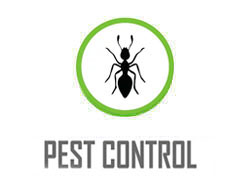
Why Do Raccoons Live In Attics?
Raccoons are incredibly adaptable and intelligent creatures capable of thriving in nearly any environment. Their ability to find food and shelter in an ever-expanding urban landscape has made them one of the most successful urban wildlife species. Although populations can vary greatly depending on the availability of food sources and den sites, most cities average between 15 and 25 raccoons per square kilometre. In fact, there are many more raccoons per square kilometre in cities than there are in rural areas. Studies show that city life has produced significant differences in behaviour and physical makeup between urban and rural raccoons.
HOW RACCOONS ADAPT AND SURVIVE
Raccoon populations in major urban centres, as well as in towns and suburbs, have surged in recent decades. As a nocturnal mammal, raccoons do most of their scavenging at night and will eat just about anything they find. Raccoons know exactly where to find unprotected garbage cans, gardens and pet food. Well-fed raccoons will live longer and have larger litters with better survival rates. In the absence of any natural predators, vehicle traffic, disease and infection represent the greatest threat to an urban raccoon’s life.
Raccoons do not construct their own den sites and would traditionally make their home inside natural trees and rock hollows. In urban areas raccoons have discovered that attics, chimneys, and sheds offer superior protection. Raccoons are at ease living alongside humans and prefer to make their home inside man-made structures.
The warmth and shelter provided by an attic makes it the ideal place to mate, raise families and keep out of the cold. For added security a raccoon will maintain multiple den sites in a given neighbourhood. Raccoons born in cities have smaller ranges compared to their rural cousins. They seldom venture beyond a square kilometre in search of food and shelter and will avoid crossing major traffic arteries.
The time of year plays an important role in determining why raccoons are inside your property and what they are doing there. Keep reading to learn more about what raccoons are up to each season:
SPRING
Spring is an exciting time for the raccoons in our communities. With newborn baby raccoons, also known as kits, arriving as early as late February and into the last weeks of July, mothers are actively looking for a cozy den site to birth and raise their young all spring. Baby raccoons are dependent on their mother for up to 10 months, which makes it important that mothers find a secure, warm location to bring food to their young as they grow. Raccoons, being great mothers, want only the best or their young, which often leads them to our attics, crawl spaces or chimneys to create a den.
SUMMER
During the 10 month period when kits are growing, they will begin to leave their den site in an attic more and more often. With rising temperatures making an attic space hot and uncomfortable, raccoons are more likely to spend their time in outdoor den sites. As the summer months pass raccoons are less active in attics, however they may return periodically if it remains a reliable source of shelter. Raccoons have a great memory, and typically have five or six den sites to choose from in a neighborhood. Once summer air turns cold, they will remember their warm den site in an attic, and happily return.
FALL
Similar to us, once a cool fall breeze sweeps through our backyards, raccoons want to cozy up inside where it is warm. Many of the baby raccoons born in the spring have become independent and are looking for a reliable den site to prepare for the upcoming winter months. During their search, raccoons will eat as much as they can to build their fat stores. As the weather grows colder, the time to find a den to survive through winter becomes more dire, this is why fall is the perfect time for raccoons to go house hunting.
WINTER
During the winter, raccoon activity drops to an all time low, as they rest in their den sites conserving energy and warmth while the cold months pass by. Natural den sites can work well to keep raccoons warm, however no raccoon can turn down an insulated attic to get through the winter. As they rest in attics, they enter a sleep state similar to hibernation called torpor, that allows them to enter deep rest and conserve their energy. As January approaches, activity increases, and raccoons begin to use their energy to mate before the upcoming spring season.
THE BENEFITS OF PROFESSIONAL RACCOON REMOVAL
Skedaddle Humane Wildlife Control has been getting rid of raccoons from homes for over 30 years. Our trained specialists will perform a thorough inspection of your home to determine how the raccoons have found their way in. We then provide each of our customers with a written quote that outlines our findings as well as the exact solution we will implement to solve the problem and prevent it from happening again. If you suspect that your home is host to raccoons, be sure to call Skedaddle Humane Wildlife Control at 1-888-592-0387.
Some More Helpful Articles:
- How Can I Tell If A Raccoon Has Babies?
- How Can I Locate Raccoon Babies?
- How To Remove Raccoons From An Attic
- How Do Raccoons Get Into Houses
- How To Clean Raccoon Feces In The Attic
- What Kind of Damage Can Raccoons Do
- How To Keep Raccoons Off Roof
- Why Do It Yourself Measures Don’t Work for Raccoon Removal
CALL US TODAY
1.888.592.0387
OR
Request for Services




FOLLOW US